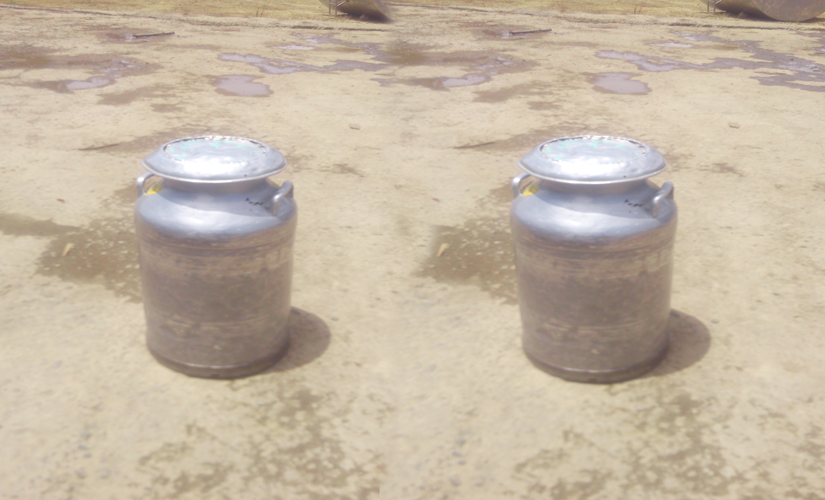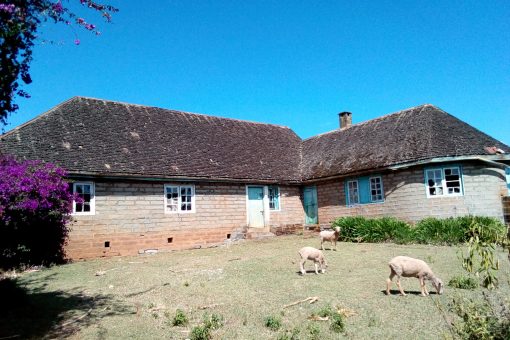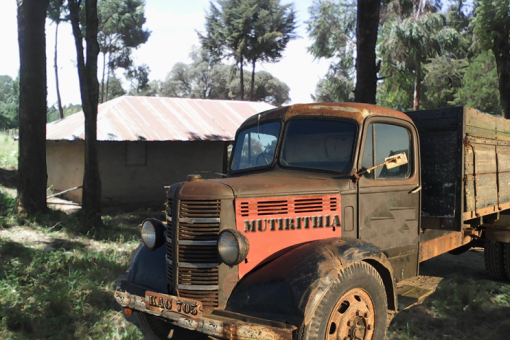Like the excess produce with no market for it, the Nyahururu KCC was the only buyer of milk from most of Nyandarua. The factory got overwhelmed with the large amounts of milk being delivered daily, they had no option but to reject some. It was not unusual to receive your milk back later in the afternoon. This was perfectly good milk with nowhere to sell it. Families already had enough milk for their daily consumption, their neighbors had more than enough milk of their own, and that evening there was more being milked and more in the morning. This was devastating to farmers.
Returned milk meant there was no payment for that day. The farmers needed those payments badly because majority of them were still repaying the government loans they received to purchase their farms. Farm produce and milk were their only source of income, and returned milk cut into that income.
What was a family to do when such milk came back, sometimes seven days in a row. Families had no choice but to consume as much of the milk as they could before it ruined. Children were forced to eat Ugali with milk as the accompaniment in place of stew or vegetables. The Ugali was made with milk instead of water, just to use up the milk. Milk was boiled in huge sufurias and tea leaves added into the milk to make it look and taste like tea. Porridge was also made with plenty of milk. By the end of three days of excessive milk consumption, entire families suffered indigestion and diarrhea. We sneaked into the kitchen and made black tea (Turungi) because we could not stand the sight or taste of milk any more.
The remaining milk was stored in 20 liter jerricans to ferment. In two weeks, it turned into a smooth rich Maziwa Mala, which we called Githana. Our Nyeri neighbors called it Mwitha and decades later Dalamere Dairies called it Yogurt.
When our Githana was ready, it became the only accompaniment for Ugali for the next few weeks until we finished all three or four 20 liter jerricans of the smooth heavy yogurt. There was no more chopping or dicing or peeling of ingredients in my mother’s kitchen, for cooking elaborate meals like sukuma wiki, stews, githeri or mukimo. The only cooking that happened, was the preparation of a huge lump of Ugali in a wok (karai), which was then emptied onto a gitaruru, the traditional Gikuyu tray, then cut up into sizeable chunks that one could easily hold in their hand. Enamel mugs that we called Fifteen were passed to each one of us as we sat around the gitaruru that held the ugali. The Server of the day brought in the 20 liter jerrican of githana. He shook it violently to blend any lumps that may have formed from the milk cream. When it was all smooth and foamy, he went around the circle, pouring into our Fifteen mugs, then poured himself a cup and joined the circle. And with that – “dinner was served”. We craved a little bit of sugar to add into our githana to make it palatable, but that was a no no from our penny pinching mother, so we soldiered on with our natural tasting unadulterated githana. The jerrican was “parked” within reach so that anybody who wished to refill their cup could do so with ease. It was very rare that any of us ever refilled because we hated githana with a passion.
After having githana for supper for days in a row, you can imagine how depressing it was to have githana brought to us as our refreshment while we worked the fields the following day. In normal circumstances, tea or porridge were our usual refreshments, but while we still had jerricans full of githana, none of those were offered until we finished the githana. Knowing that, you would think we could have poured out some of that githana behind our parents’ back to shorten our “suffering” season. But then I realize how innocent my generation was as children. The path of integrity and decency our parents directed us to follow, we stayed on it no matter how uncomfortable it made our lives. My generation is trying its best to raise decent children as well, but, I can assure you, they would have poured out that githana in a heartbeat. I know mine would.
Anyhow, the above was our everyday meal for weeks at a time until all the githana was finished. The day the aroma of onions frying in our mother’s kitchen wafted into the fresh OlKalou air, signalling the cooking of “real” food that could be served on a plate and eaten with a spoon, there was such great excitement, you would think mother was preparing T-Bone steak for our supper. In normal circumstances, we hated eating the ever boring “Nyandarua stew” which comprised of potatoes, carrots and cabbage, but on such a day, we did not care if that is what mother was cooking. This time round, after coming off of a diet of Ugali and githana, such a stew was a welcome relief, we almost enjoyed it.
All this ‘suffering’ was courtesy of KCC returning perfectly good milk that we had no use for.




